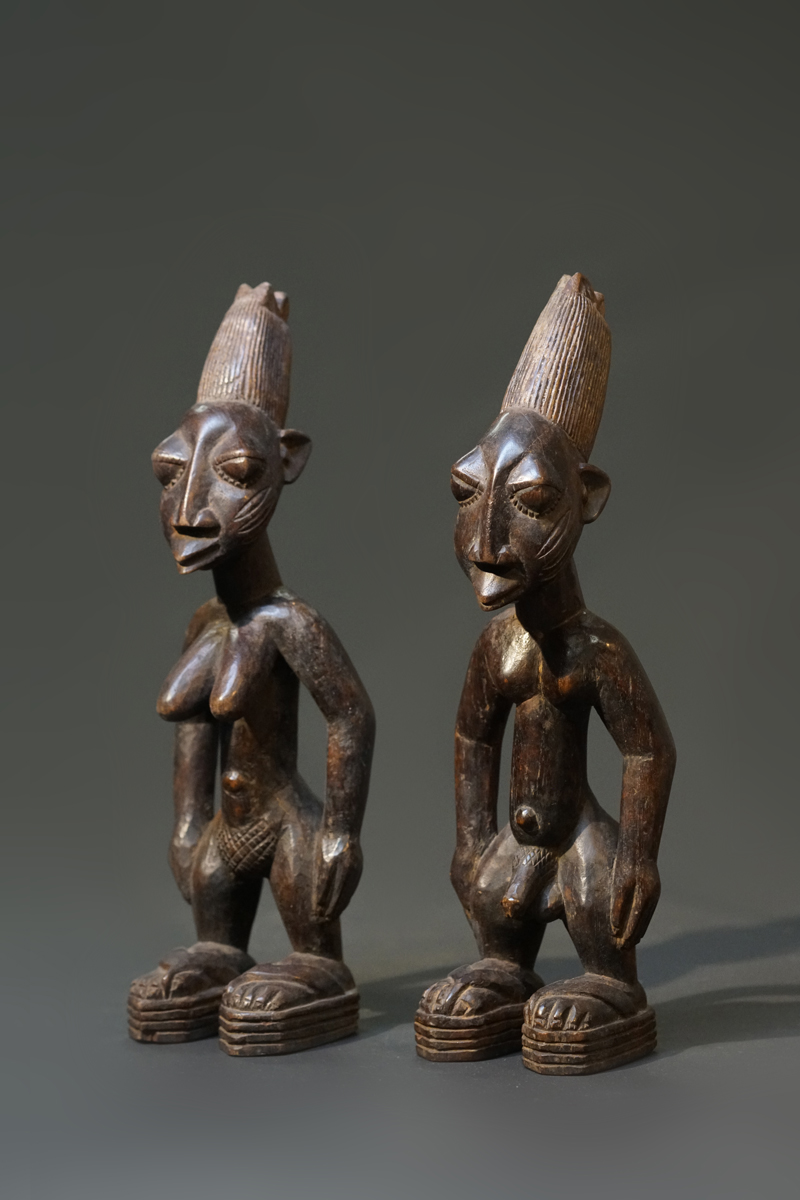|
An Ere-Ibeji couple, male and female of good quality, standing on oval striped bases. Both wear their hair in the same grooved patterned updo. Their bodies are compact with short legs, their arms touching their thighs. Their eyes are large and the eyelashes are notched. The ears are also large. Both faces have scars that extend from the ears to the mouth. The nose elongated straight, the mouth pointed and well defined. The genital area with diagonally grooved patterns. These carved wooden sculptures from West Africa represent the souls of deceased twins. ...These carvings are called ere ibeji (‘ere’ means sacred image, ‘ibi’, means born and ‘eji’ means two). The family look after this figure as if it were alive: feeding, bathing, clothing, carrying it like a baby, and performing rituals on significant occasions, to ensure the balance of the shared soul. These figures show evidence of the years of attention and care they have been given, their facial features worn smooth with the handling they have received. ...These distinctive small standing figures are carved to portray the twin in adult form, and the sculptures may be dyed, or decorated with shells, glass beads and metal to enhance their status. ... Today mothers will also use commercially produced plastic dolls in place of the wooden ere ibeji. Lit.: Yoruba Customs and Beliefs Pertaining to Twins. Fernand Leroy, Taiwo Olaleye-Oruene, Gesina Koeppen-Schomerus and Elizabeth Bryan, Cambridge University Press, Volume 5, Issue 2 , 01 April 2002, p. 132ff Height: 30,5 cm / 30,5 cm |
 photo: wolfgang-jaenicke.com, for more information, please write us an e-mail with the identification number of the photo identification no. GSC01251.jpg |